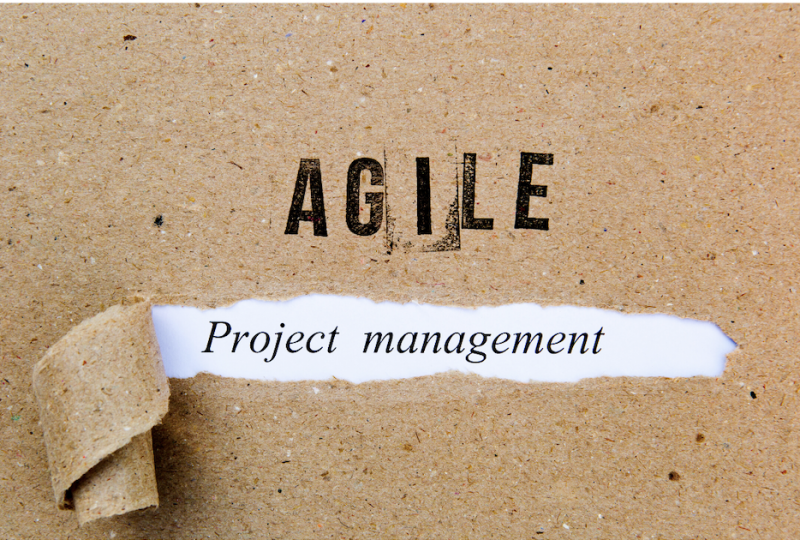Why Coles is turning to ‘inclusive Agile’
20.01.20
Accessibility now more than just a “cautionary tale”.
Coles is moving to an inclusive agile approach for the way it develops and enhances over 200 digital assets, from websites and apps to kiosks and “assisted checkouts”.
The supermarket giant is using patterns and resources from the Accessibility Project – or A11Y – to guide its work on improving the digital experience for all users of its platforms.
Senior digital experience and accessibility analyst Mel O’Brien told the A11Y Camp in Sydney late last year that Coles made big changes to its approach to accessibility after settling a high-profile case in 2015 brought against it by a blind woman who had trouble using Coles’ online shopping site.
Cautionary tale
 O’Brien said Coles was still used as a “cautionary tale” or “warning story” in accessibility speeches and reports to this day, even though the supermarket giant had made significant changes since.
O’Brien said Coles was still used as a “cautionary tale” or “warning story” in accessibility speeches and reports to this day, even though the supermarket giant had made significant changes since.
“Don’t get me wrong – what happened to Coles should continue to serve as a warning case to others,” she said.
“But beyond being a cautionary tale, Coles also serves as an example of an organisation that is making a deliberate cultural shift to place more of an emphasis on accessibility.
“Today we have a strategic focus on accessibility, and our goal is digital equality. Our intention is to ensure that digital experiences are inclusive for everyone.
“We learnt from our mistakes. Hopefully you can, too.”
The retailer now has a “small, yet plucky” team of three with direct responsibility for accessibility.
Agile ways of working
 However, it is also focusing considerable efforts on incorporating accessibility into the development and enhancement of digital platforms and services, by building accessibility principles and testing into existing Agile ways of working.
However, it is also focusing considerable efforts on incorporating accessibility into the development and enhancement of digital platforms and services, by building accessibility principles and testing into existing Agile ways of working.
“The real dream is to implement a way of working where everyone plays their part, and this is why we’re rolling out an inclusive Agile approach,” O’Brien said.
“People have been theorising about including accessibility in Agile for a while, and theoretically it definitely works, but what I wanted to know was: will it work in the real world, on a large scale, here in Australia – and for selfish reasons, I wanted to know if it would work for us at Coles.
“Because Coles teams mostly work in Agile already, it just makes sense to embed accessibility into the way we’re already working.”
Integrating accessibility deeply into the development process means digital platforms and services become accessible by design.
“Generally speaking – and it does make me sad to say – accessibility has a bit of an image problem,” O’Brien said.
“It is seen as a blocker and a hurdle that slows down projects.
“Many organisations struggle with delivering accessible experiences, and when trying to bring their products and services up to meet accessibility standards, what usually happens is organisations will go through a WCAG [Web Content Accessibility Guidelines] audit either just before or just after launch.
“When this happens, the project manager or product owner is faced with the challenges of finding the budget for the audit remediation and finding the time to do all of this work before the project goes live – or even worse before someone notices that it’s not accessible.”
O’Brien characterised this as “the ‘accessibility after we’ve done everything else, if we get enough time and if it doesn’t blow out the budget, or timelines’ approach.”
To address accessibility and create inclusive digital experiences, O’Brien said it was important to incorporate patterns and practices into existing ways of working, and for as many people as possible internally.
“More people actively contributing to accessibility means less risk for the business,” she said, noting it also meant the small internal A11Y team could “cover more ground”.
However, with “hundreds of digital assets in the Coles ecosystem”, O’Brien said the adoption and embedding of inclusive Agile would be “a long game”.
“Why are agile and accessibility such a good match? Well, firstly, the business needs to deliver high quality accessible solutions, and by picking up the defects early and often, remediation time is reduced, thereby helping to ensure projects are delivered on time,” she said.
“We did a lot of research, and we spoke to the team members at Coles to find out if inclusive Agile would work for them – and if it would work for us, because it’s a theory at this point.
“We used agile phases and inputted the accessibility actions and checkpoints to make sure accessibility was included throughout.”
New ways of working

The retailer piloted the new ways of working with a single team, which included the creation of a “one-on-one coaching style training model [to] provide the information and the hands-on experience required to ingrain the necessary accessibility skills and knowledge, and crucially to give the participants the confidence to use that knowledge.”
The training model was developed by Coles and digital accessibility agency Intopia.
“The initial feedback following the pilot shows this new way of working is in fact working in terms of sharing the responsibilities, increasing checkpoints and reducing the amount of A11y defects,” O’Brien said.
“To me, this means more accessible experiences for everyone.”
Original ‘Why Coles is turning to inclusive Agile’ article by Ry Crozier, ITnews
